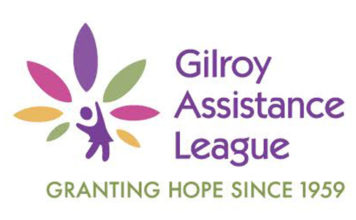UPDATED:The council kicked off its annual policy summit this
morning without the hearty assortment of pastries, juices, fruits
and coffees it enjoyed last year.
The council kicked off its annual policy summit this morning without the hearty assortment of pastries, juices, fruits and coffees it enjoyed last year.
There were a few muffins and bananas in the corner, but for the most part pitchers of water on snackless tables indicated a much different time this year. The slow economy and the impending depletion of the city’s once-robust reserve fund came up again and again as council members and staff discussed their past priorities, the city’s current financial predicament and where to go from here.
All funds lead to general
City officials have known for months that the general fund reserve was on the fast-track to depletion, but it seemed to cause new-found concern with spring and the next budget season around the corner.
City Administrator Tom Haglund gave the council updated budget numbers for the reserve fund, which held nearly $22 million at the beginning of the fiscal year last July. He and staff now expect the balance to drop to $5.5 million by June 2009 – which elicited an audible gasp from council members and other city personnel – and his previous reports have shown the balance could plummet to negative $11.5 million a year later. But that is only if if the city does not permanently cancel or delay tens of millions of dollars worth of major capital and infrastructure projects the reserve covers when developers are not building houses and paying fees to finance those projects.
“We’re going to burn through $25 million in three years,” Councilman Craig Gartman said in reference to the fund’s balance in 2006 and 2007.
Mayor Al Pinheiro pointed the finger at the city’s practice of leveraging its development-based funds against the reserve account to make financial commitments such as Gilroy’s $7 million promise to the Gilroy Unified School District to help build an aquatics center and new gym at Christopher High School over the next two years.
“I have indicated to the school district that the city can’t write that check,” Haglund said. “We will deal with this by working with the council and with the school district through the budgetary process.”
Dozens of other projects planned and pledged during the city’s golden days of residential development have contributed to a mountain of projects that could cost the reserve seven and eight figures a year unless the fees pick back up or the projects are canceled or deferred.
As for the budgetary process, Haglund said he wants to turn the fiscal year into two and make the document itself more user friendly.
A two-year budget “greatly reduces workload in that second year,” Haglund said. “It allows staff to concentrate on projects rather than spending a tremendous amount of time in the spring on preparing a new budget document.”
Councilman Peter Arellano also pointed out that by shifting to a biennial budget, the process would coincide with council elections and allow newly elected bodies to shape their times in office. Haglund added that a more farsighted fiscal plan would also demonstrate responsibility to residents.
And when it comes to looks, Haglund showed the council a model template he designed for the fire department’s training budget. Instead of terse alpha-numeric abbreviations and rows of numbers, detailed sentences explained the specific destination of money and how that money connects to, say, a specific council project or another fund. Green fonts designated environmental expenditures, and a report card below compared the fire department’s past and present performance rates in terms of response times and how that translated into costs.
As far as saving the general fund reserve, Haglund recommended that the council pass an ordinance to create a special reserve with tight strings attached to it. It could be off-limits to the arbitrator who settles salary negotiations between the city and unions, which pleased the mayor.
Pinheiro and others also welcomed news that the city is squeezing money out of a hulk of securities the council voted to sell last year.
“Anybody’s who’s making money nowadays is a genius,” Councilman Bob Dillon said in regards to the city’s monthly income of about $40,000. That is the latest monthly dividend from $46 million worth of notes the city issued in 2003 to fund the construction of the Sunrise Fire Station, the new police station, the sports complex and improvements at the corporation yard. The city had the cash for the projects back then, but rather than spend its own money, it opted to externally finance the projects and pay a lower interest rate to investors than it expected to earn on investing its un-spent reserves in securities and federal bonds.
The city still owes $42.7 million on the notes, and up until last winter, the investment had netted Gilroy $600,000, according to city figures. Then interest rates on the notes shot up as jittery investors could not sell them and were required to keep them, triggering automatically higher interest rates based on a weekly index. Gilroy only has $152,000 per month budgeted for the interest payments on its notes, which anticipates an annual rate of about 4 percent, but the weekly rates in November shot up from about 3 percent to nearly 12 percent, but they have since sunk around 2 percent, according to Finance Director Christina Turner. The city has all its financial paperwork in order to by the securities back when the city stops earning money, Haglund said.
When it comes to retail, the city will surely continue to lose tax money, according to Economic Development Corporation President and CEO Larry Cope.
“I think 2009 is going to be brutal when it comes to retailers and it will be the same about June with the manufacturers,” Cope said. “We’re not done with this, as you guys said earlier. It’s only going to get worse.”
To save money, the council considered outsourcing the city’s emergency medical services and tweaking the fire department’s deployment, but the body (less Gartman) ultimately agreed to leave things be.
Saturday when the council meets with its Morgan Hill counterpart, the two will talk about combining 9-1-1 centers, but Friday’s conversation concerned only local emergency services through the fire department.
Councilman Bracco reminded his colleagues that residents called for superior medical response in the past. Taking that away, he said, by contracting with private businesses would only recreate the same predicament.
“I would be afraid to go backwards on this,” Bracco said. “Our hiring standards can’t compare to an ambulance company.”
Foster said the city spends about $200,000 a year to provide ambulance services, and the county reimburses the department $130,000 a year. He also said it would be a bad idea to move the Las Animas Fire Station, 8383 Wren Ave., to the Sunrise Fire Station, 880 Sunrise Drive, as another way to save money and spread out fire protection now that Sunrise has been relegated to an emergency-only response station. Foster and the council agreed that the relative lack of calls in the city’s northwest region meant Las Animas should stay where it is.
Gangs, houses and strip clubs
Police Chief Denise Turner announced that she has discovered a way to receive $200,000 from the Department of Justice if the grant funds gang work. To do that, Turner said she wants hire someone to bridge the public-private gap between the police and community groups that both reach out to families affected by gangs, but in different ways.
“Really we’re only getting a very few,” Turner said in regard to the department’s success in preventing at-risk youth from joining gangs or committing crimes. Having a liaison to work (at no cost to the city) with all of Gilroy’s community groups and to keep contact with them and the city’s high-risk population would greatly benefit the department in such unsure times, Turner said.
She also praised the most recent gang education meeting at the senior center. About 75 people attended that meeting, fewer than the first community gathering last November after Larry Martinez Jr. was shot and killed. Emotions were high then, but said she still sees a willingness among residents.
“After the homicide, there a lot of anger and fear and finger-pointing, but the meeting Tuesday night was educational,” Turner said. “There were parents there with their children asking great questions.”
Council members and anybody with an interest in the economy still have plenty of questions about jumpstarting stalled developer fee revenue. Most council members agreed with developers Friday: The idea of fixing the market is a waste of time.
The mayor and others recounted recent conversations with local developers who they said told them not to encourage more development because too many homes, new and old, already saturate the market. Adding to that pile will only drive prices down further, council members said while Economic Development Corporation President and CEO Larry Cope nodded his head.
At one point, though, Councilman Peter Arellano questioned why the council was so concerned about the welfare of developers and how to please them.
“I”ll answer that,” Councilman Craig Gartman said. “We have no money.”
“Symbiosis, Peter,” said Councilman Bob Dillon.
Unless the city wants to watch its reserve go down the drain, Gartman said something has to be done, but not all of his colleagues agreed.
“I think we just need to stay out of it and let the market run its course. When it bounces back, it’ll bounce back on its own,” Councilman Dion Bracco said. He added that by luring new developers to the city’s door, the council will be doing a disservice to past and regular developers who either have housing rights with time limits or have already built their houses and paid their fees – which city figures show run about $50,000 per single-family residential home, though developers have said it usually ends up closer to $70,000 – and are now sitting on loads of depreciating inventory.
Barring developers advice, here are some ideas to spur development that Community Development Director Wendie Rooney presented to the council: defer fees, relax affordable and senior housing requirements, eliminate application fees and extend time limits for development.
Councilman Perry Woodward suggested that developers should only have to pay impact fees once they actually sell the house – not as they are building the usually unsold structures
“It seems to me, philosophically, a better time to assess the impact fees when someone actually moves in,” Woodward said, adding that there should also be a two-year time frame to prevent the developer from just moving in and not changing title or never selling the house.
At the end of the conversation, the council directed staff to come back with some impact fee scenarios and research about other cities that assess impact fees when homeowners move in.
One thing that won’t be moving into Gilroy – and that the council wants to make sure never will – is a strip club.
After being caught off guard by the short-lived proposal to build a strip club near the Gilroy Premium Outlets, council members said they wanted to revise the local adult business ordinance to make opening a strip club as hard as possible without violating any First Amendment rights to freedom of expression.
“Why don’t we just ban it?” Councilwoman Cat Tucker asked before Councilman Perry Woodward recounted strip club cases he remembered reading in a constitutional law class.
“We can go right up to the line … take an aggressive stance and defend it in court,” Woodward said.
Councilman Dion Bracco lampooned the staff report that said the club would “fit harmoniously with the surrounding land uses,” which includes Home Depot and other big-name businesses near the Outlets.
“I can’t see how they came up with that,” Bracco said.
Gilroy Gardens
The educational theme park’s board of directors wants the council to come up with a game plan for the 536 acres the business sits on, according to City Administrator Tom Haglund.
While that has been the case ever since the city bought the land almost a year ago, the Gilroy Gardens Board of Directors wants the city to start brainstorming, both for its sake and the park’s sake, according to Haglund.
“The reason they want to do that is so we can sort of once and for all make a determination about amusement park itself,” Haglund said.
The city has $150,000 budgeted over two years to create a master plan for the area, which could include trail systems and other woodsy attractions the city and park could use together, Haglund said. He cautioned, though, that the $150,000 is in an developer fee-based fund that will have a $10 million deficit next year.
“It would be problematic to spend that,” Haglund said as city officials chuckled. “These are numbers on a page.”
Councilwoman Cat Tucker warned the council from meddling in the park’s business and said she shied away from too much cooperation.
“They’re the ones operating their business. They need to make the decisions,” Tucker said.
Mayor Al Pinheiro and Haglund responded by saying it is not the city’s intention to run the park, but it is important to work with the board lest it plan its business on current conditions and then the city ultimately decides to rezone or alter the area, possibly putting the gardens out of business and dragging down the area as it falls into abandonment.
Last year a group of Asian investors surprised the city council with a $35 million offer for the park and the mostly untouched land that surrounds it, but that was before the credit crisis, Haglund said. The offer had a long way to go before consideration, but now that no offers are coming in, Haglund said the city should start designing the area’s future.















